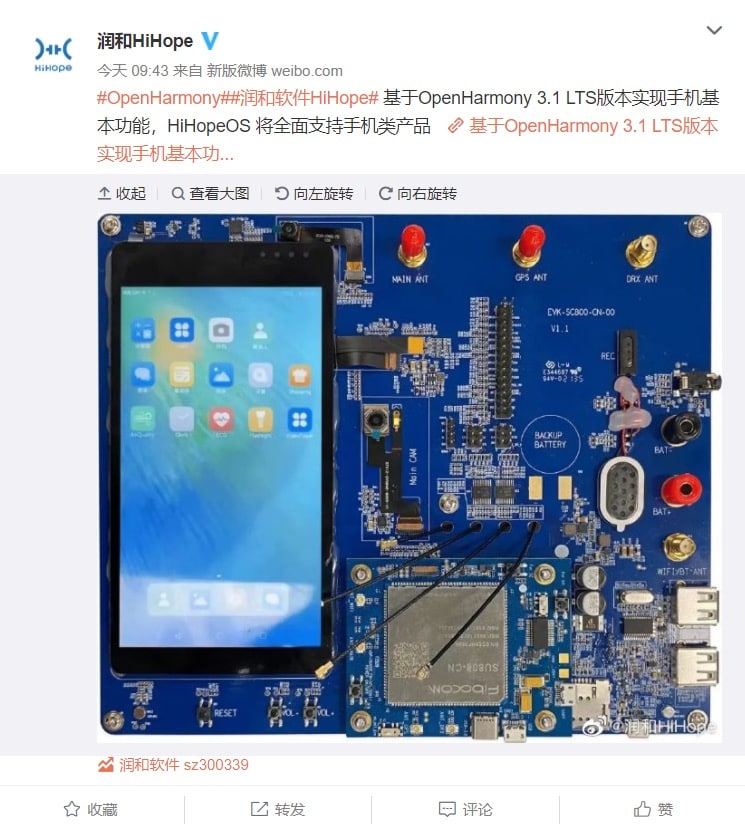HiHopeOS achieves smartphone features of Huawei OpenHarmony operating system
Chinese software maker – Runhe Software has recently announced that the HiHopeOS operation system has achieved smartphones’ basic use case features from OpenHarmony 3.1 LTS. After this success, the software maker plans to cooperate with smartphone manufacturers.
According to the information, Runhe Software has completed the test of OpenHarmony features powered by a 4G chipset. This also confirms that the OpenHarmonyOS 3.1 can be used for smartphone products.
Why this achievement is important?
Well, the native support for OpenHarmony without including a traditional library will boost the use of entire/pure use of the OpenHarmony-based operating system. So, instead of using multiple software libraries, the manufacturer will have complete control over the software.
Runhe Software’s HiHopeOS currently supports smartphone-level user experience including calling, messaging, sending and receiving emails, instant messaging, playing music, taking notes, and running around different applications.
In terms of chipset, the HiHopeOS uses a chipset with LTE CAT4, integrates Mali GPU, DPU, GSP, and other graphics acceleration hardware, supports FDD/TDD-LTE, WCDMA, GSM wireless communication mode, and Wi-Fi/BT and other Distance wireless transmission technology.
It has 2GB of RAM and 16GB of internal storage, while it is equipped with a front and rear dual camera system, touch screen, speaker, microphone, SIM card, SD card slot, battery, and all of the additional features that empower a smartphone.
It’s expected the new HiHopeOS could be used for a variety of scenarios including smart payment, robotics, smart home, and other fields of technology.

Let’s take a detailed view of what the system can currently do at full capacity:
Calling capability: On-board high integration supports LTE CAT4 SoC, supports FDD / TDD-LTE, WCDMA, GSM wireless communication modes, supports making calls, sending and receiving text messages.
Cellular network: The onboard 4G CAT4 SoC supports cellular data module, cellular data management, network interaction, etc., and adds cellular data surfing based on the operator’s network.
Web browser: It integrates a web browser application based on the stage model and related interfaces to realize web page access.
Distributed capability: Support distributed soft bus, distributed application flow, distributed database, distributed data object, support local database access and cross-application database access, and other capabilities.
Currently, the basic system adaptation and peripheral adaptation of the domestic 4G chip platform have been completed, including the adaptation of basic peripherals such as UART, IIC, and SPI, and the adaptation of features such as Audio, Voice, Video, Camera, LCD, and GPU.
The development of features such as conducting calls, doing text messages, sending and receiving emails (cellular network), instant messaging (cellular network), music playback, and video playback has been added.
(via)
The post HiHopeOS achieves smartphone features of Huawei OpenHarmony operating system appeared first on Huawei Central.
Post a Comment
0 Comments